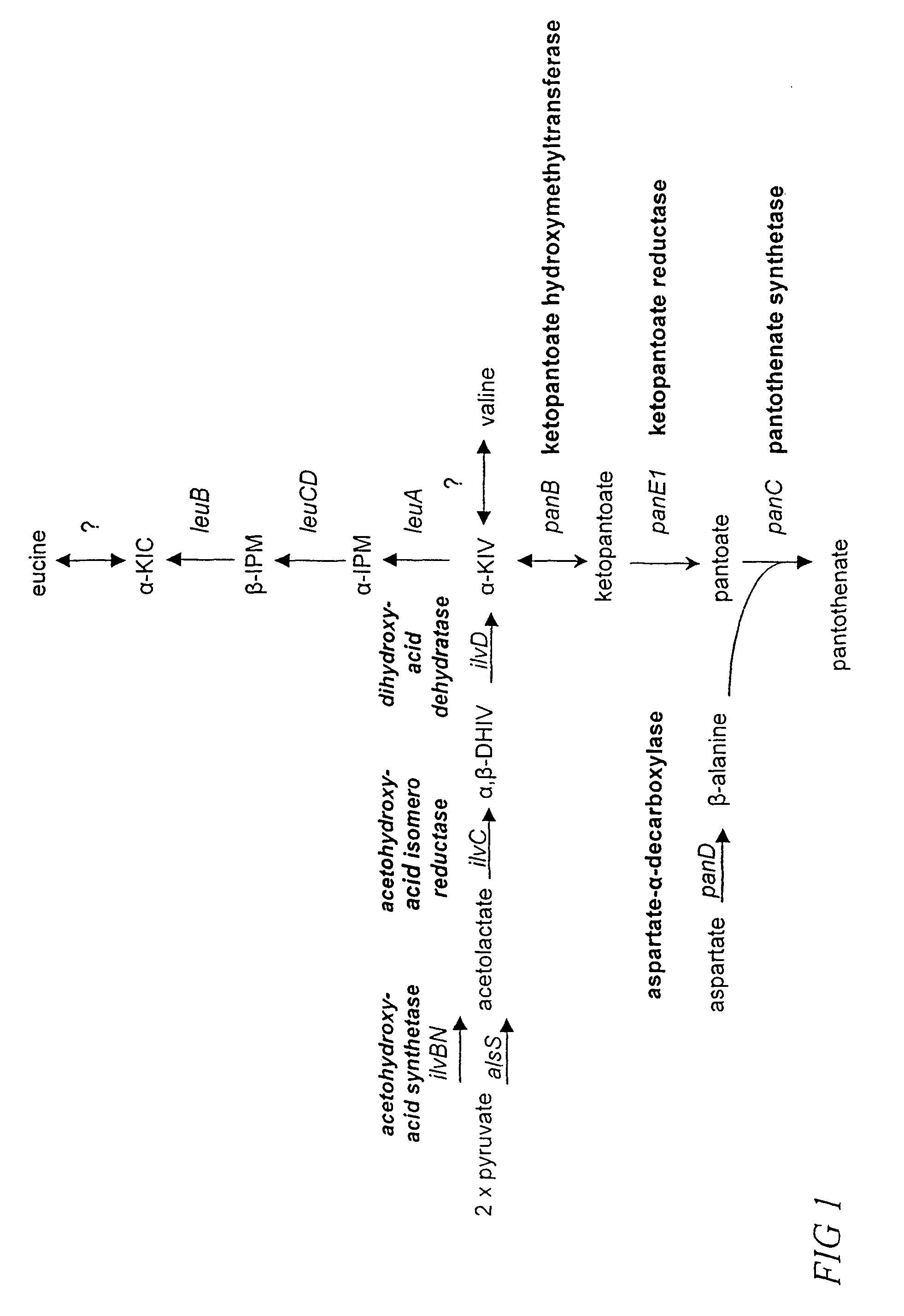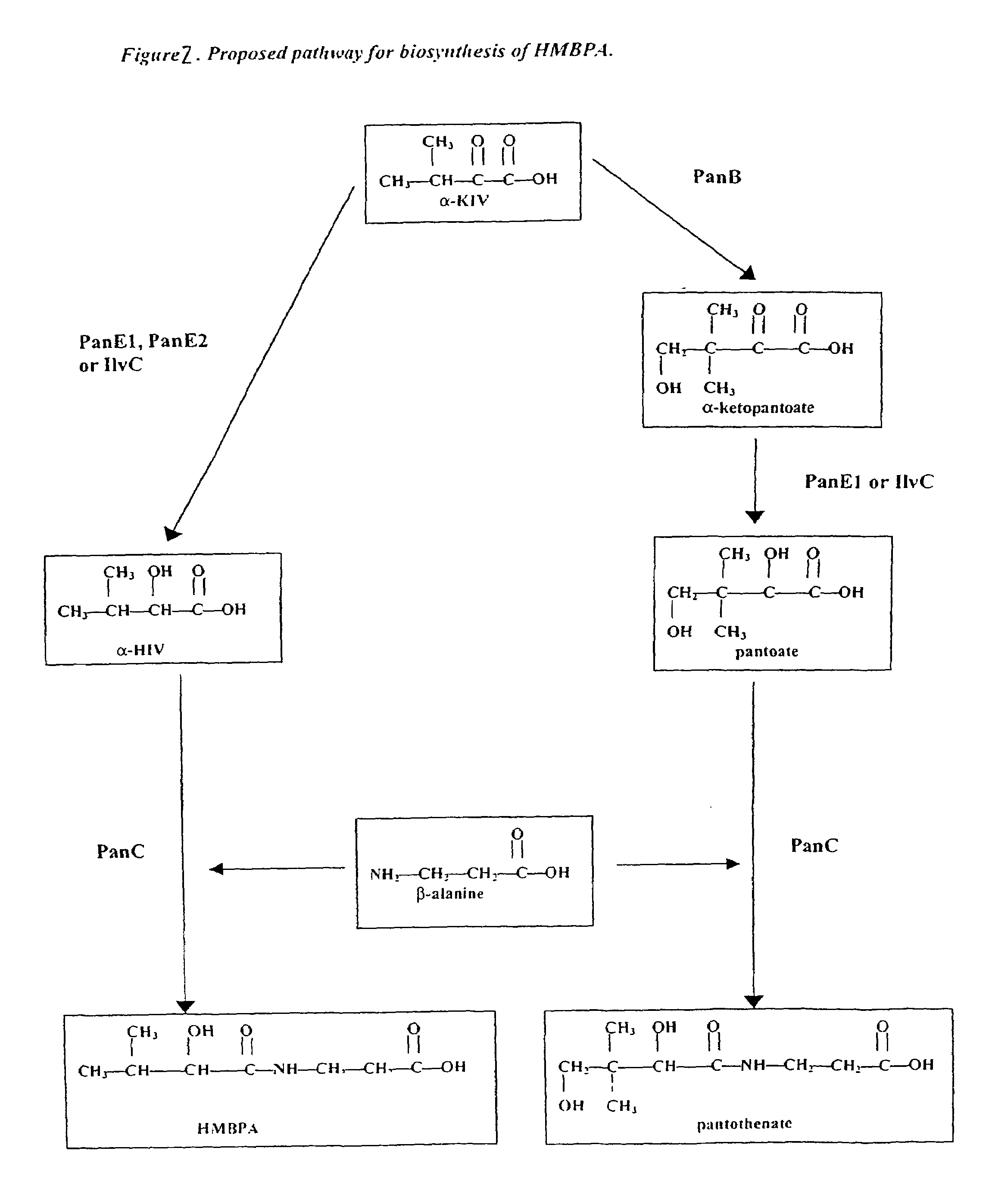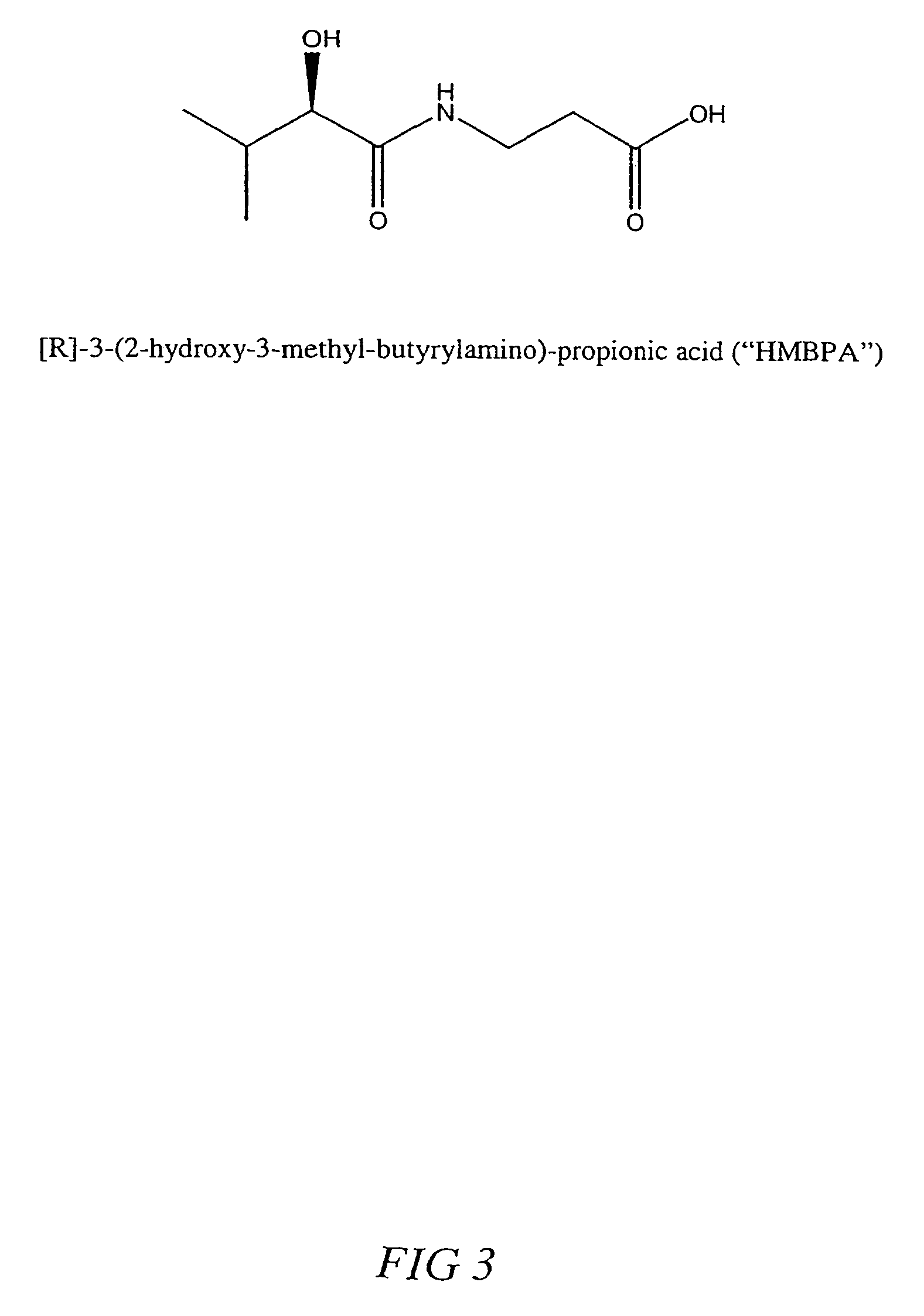Processes for enhanced production of pantothenate
a technology of pantothenate and enhanced production, which is applied in the direction of enzymology, drug compositions, transferases, etc., can solve the problems of excessive substrate cost and other problems, and achieve the effects of increasing pantothenate, reducing or eliminating hmbpa biosynthesis, and effectively increasing pantothenate biosynthesis
- Summary
- Abstract
- Description
- Claims
- Application Information
AI Technical Summary
Benefits of technology
Problems solved by technology
Method used
Image
Examples
example i
Discovery and Characterization of the [R]-3-(2-hydroxy-3-methyl-butyrylamino)-propionic acid (HMBPA) Biosynthetic Pathway
[0086]In developing Bacillus strains for the production of pantothenate, various genetic manipulations are made to genes and enzymes involved in the pantothenate biosynthetic pathway and the isoleucine-valine (ilv) pathway (FIG. 1) as described in U.S. patent application Ser. No. 09 / 400,494 and U.S. patent application Ser. No. 09 / 667,569. For example, strains having a deregulated panBCD operon and / or having deregulated panE1 exhibit enhanced pantothenate production (when cultured in the presence of β-alanine and α-ketoisovalerate (α-KIV)). Strains further deregulated for ilvBNC and ilvD exhibit enhanced pantothenate production in the presence of only β-alanine. Moreover, it is possible to achieve β-alanine independence by further deregulating panD.
[0087]An exemplary strain is PA824, a tryptophan prototroph, Spec and Tet resistant, deregulated for panBCD at the pa...
examples ii –
Examples II–VIII
[0106]For Examples II–VI, quantitation of pantothenate and / or HMBPA was performed as follows. Aliquots of fermentation media were diluted 1:100 and aliquots of test tube cultures were diluted 1:10 in water or 5% acetonitrile prior to injection on a Phenomenex Aqua™ 5 μC18 HPLC column (250×4.60 mm, 125A). Mobile phases were A=5% acetonitrile, 50 mM monosodium phosphate buffer adjusted to pH 2.5 with phosphoric acid; and B=95% acetonitrile, 5% H2O.
[0107]Linear gradients were as follows.
[0108]
MinutesSolvent ASolvent B0100%0%16100%0%17 0%100% 20 0%100% 21100%0%
[0109]Additional parameters and apparatus were as follows: Flow rate=1.0 ml / min; Injection volume=20 μl; Detector=Hewlett Packard 1090 series DAD UV detector-3014, Signal A=197 nm, ref.=450 nm, Firmware revision E; Column heater=Oven temperature 40° C.; Hardware=Hewlett Packard Kayak™ XA; and Software=Hewlett Packard Chemstation Plus™ family revision A.06.03[509].
[0110]HMBPA elutes at approximately 13 minutes in th...
example ii
Decreasing HMBPA Synthesis by Deleting PanE2 from Pantothenate Production Strains
[0111]As described in Example I, HMBPA production was first observed in microorganisms overexpressing panE1 indicating that ketopantoate reductase is capable of catalyzing not only the reduction of ketopantoate to pantoate but also the reduction of α-ketoisovalerate to 2-hydroxyisovalerate. As mentioned previously, two genes in the B. subtilis genome are homologous to the E. coli panE gene encoding ketopantoate reductase and have been named panE1 and panE2. In Bacillus, it has been demonstrated that the panE1 gene encodes the major ketopantoate reductase involved in pantothenate production, whereas panE2 does not contribute to pantothenate synthesis. Moreover, overexpression of panE2 from a P26panE2 cassette in pAN238 (SEQ ID NO:25) leads to a reduction in pantothenate titer (see e.g., U.S. patent application Ser. No. 09 / 400,494). Given the homology between the panE2 and panE1 gene products and the fact...
PUM
| Property | Measurement | Unit |
|---|---|---|
| Time | aaaaa | aaaaa |
| Time | aaaaa | aaaaa |
| Time | aaaaa | aaaaa |
Abstract
Description
Claims
Application Information
 Login to View More
Login to View More - R&D
- Intellectual Property
- Life Sciences
- Materials
- Tech Scout
- Unparalleled Data Quality
- Higher Quality Content
- 60% Fewer Hallucinations
Browse by: Latest US Patents, China's latest patents, Technical Efficacy Thesaurus, Application Domain, Technology Topic, Popular Technical Reports.
© 2025 PatSnap. All rights reserved.Legal|Privacy policy|Modern Slavery Act Transparency Statement|Sitemap|About US| Contact US: help@patsnap.com



